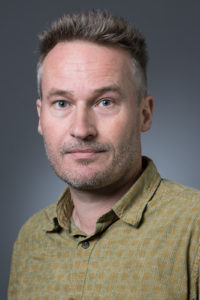
Associate Professor Jesper Tække
Aarhus University, School of Communication and Culture
Centre for Internet Studies (CFI)
I am an Associate Professor in Media Studies and Organisational Communication at Aarhus University, School of Communication and Culture. With a robust and interdisciplinary academic background, I hold an MA in Information Studies and Organizational Psychology from Aarhus University and a Ph.D. in Media Sociography from the IT-University of Copenhagen.
Research Interests and Focus
My research primarily explores the intricate relationship between technical communication media and societal structures, with a special focus on the digitalization of society, particularly in relation to social media. Over the past 15 years, my empirical research has been centered mainly on upper secondary education systems. However, my interests also extend to other organizational systems, examining the revolutionary impact of digital media.
Teaching and Course Involvement
An integral part of my role at the university includes teaching courses that delve into complex media theories and their societal implications. Notably, I instruct the course “Medie, kultur, og videnskabsteori I and II,” which offers deep insights into media culture and the theory of science, underlining my commitment to shaping critical and analytical thinkers in the field.
Key Projects and Collaborations
Together with Michael Paulsen, I have led three significant research projects: the Socio Media Education experiment, the BIT-project, and the DUFA-project. Additionally, my collaboration with Jakob Linaa Jensen has resulted in the publication of two influential books on social media.
Publications and Academic Contributions
I have authored numerous books and papers. A highlight of my publications is an English book from 2022, which encapsulates our research findings and is available online for free here. My theoretical work primarily revolves around Medium Theory and communication sociological systems theory, particularly influenced by Niklas Luhmann. To name two publications that develop theory for contemporary society (otherwise, see the publication list):
- Tække, J. (2022). “Materiality and Autonomy Big Data in the Education System.” Cybernetics & Human Knowing, Vol.29(3), pp.121-140.
- Tække, J. (2022). “Algorithmic Differentiation of Society – a Luhmann Perspective on the Societal Impact of Digital Media.” Journal of Sociocybernetics, Vol. 18 No. 1 (2022). Read here.
Recent and Upcoming Work
My recent contributions include a 2021 book on organizational culture. In 2023, my research will pivot towards analyzing the Anthropocene from a systems- and media-sociological perspective, interpreting society as a sociotechnical autopoiesis machine that has been shaping human interaction since the emergence of articulated language in the Pleistocene (see the publication list).
Conference Participation and Media Presence
I have actively participated in numerous conferences, including delivering a keynote presentation at the 7th ISEKI-Food Conference on “Digitalization of Education – The Theory of the Three Waves.” My work has also garnered media attention, and I have provided expert opinions and insights on various platforms.
Learn more about my research and publications.
—————————————————————————————————–
Keynote Presentation at the 7th ISEKI-Food Conference: “Digitalization of Education – The Theory of the Three Waves”
I recently had the privilege of delivering a keynote presentation at the esteemed 7th ISEKI-Food Conference. My talk, titled “Digitalization of Education – The Theory of the Three Waves,” delved into the ongoing media revolution and its transformative impact on education and social structures.
Synopsis of the Keynote:
We are currently experiencing a significant shift in how digital media shapes our social world, necessitating adaptations across all sectors, particularly education. Traditional approaches are becoming obsolete in the face of new digital information and interaction paradigms. The education system often struggles to respond effectively, either by restricting digital media usage or overlooking its significance. My keynote addressed this gap by introducing an empirically based theory on the evolution of classroom teaching in the digital era.
The Three Waves of Classroom Transformation:
- First Wave: The initial phase involves opening up the traditional classroom, which presents challenges such as student distraction and teacher adaptation to digital media.
- Second Wave: Focus shifts to enhancing educational interactions between teachers and students through social media.
- Third Wave: This advanced stage sees the successful integration of external parties like authors, researchers, and AI systems into the educational process, fundamentally transforming traditional educational settings.
I emphasized the importance of moving beyond a mere competency-based approach. In our digital era, it’s crucial to foster critical-thinking, autonomous citizens who can assume social responsibility. The keynote highlighted the need for an educational framework that embraces “Bildung,” a concept encompassing personal and cultural maturation, to prepare individuals for the challenges of a digitalized society.
This presentation was a cornerstone at the 7th ISEKI-Food Conference, contributing to the broader dialogue on digitalization’s role in shaping future education systems. The insights provided were aimed at educators, policymakers, and academic professionals seeking to understand and navigate the complexities of digital media in education.
For more details about the conference and other sessions, visit the ISEKI-Food Conference website.
